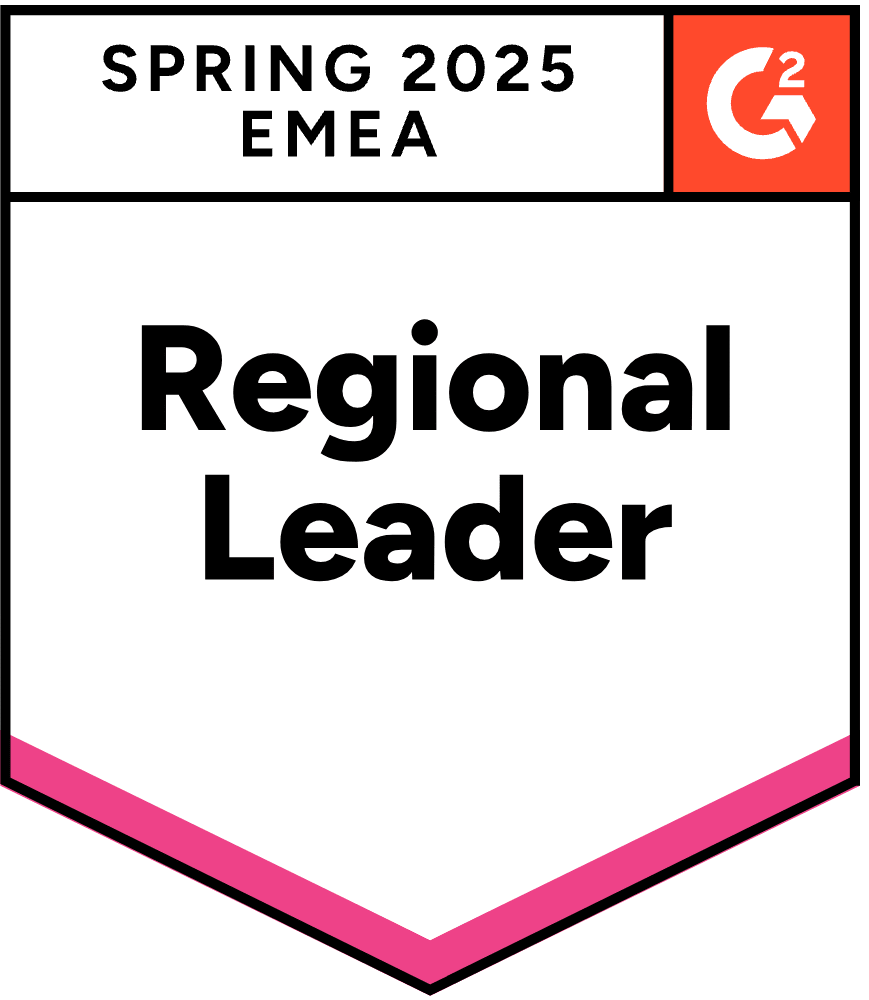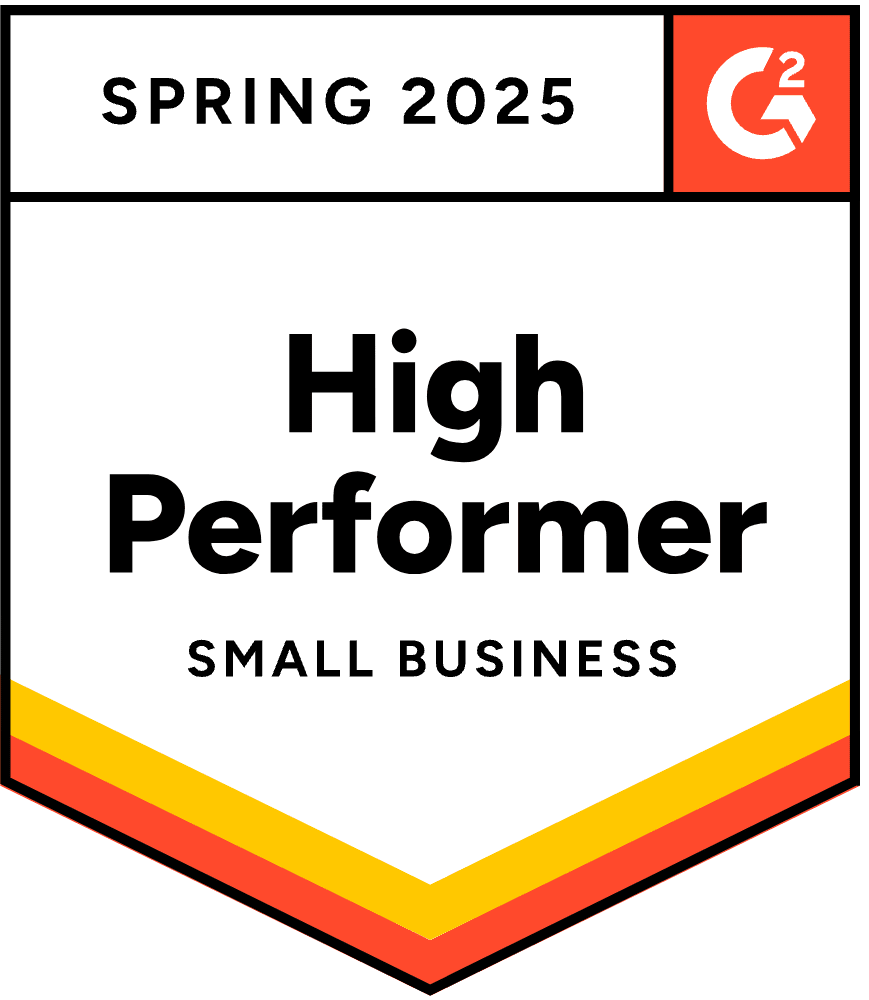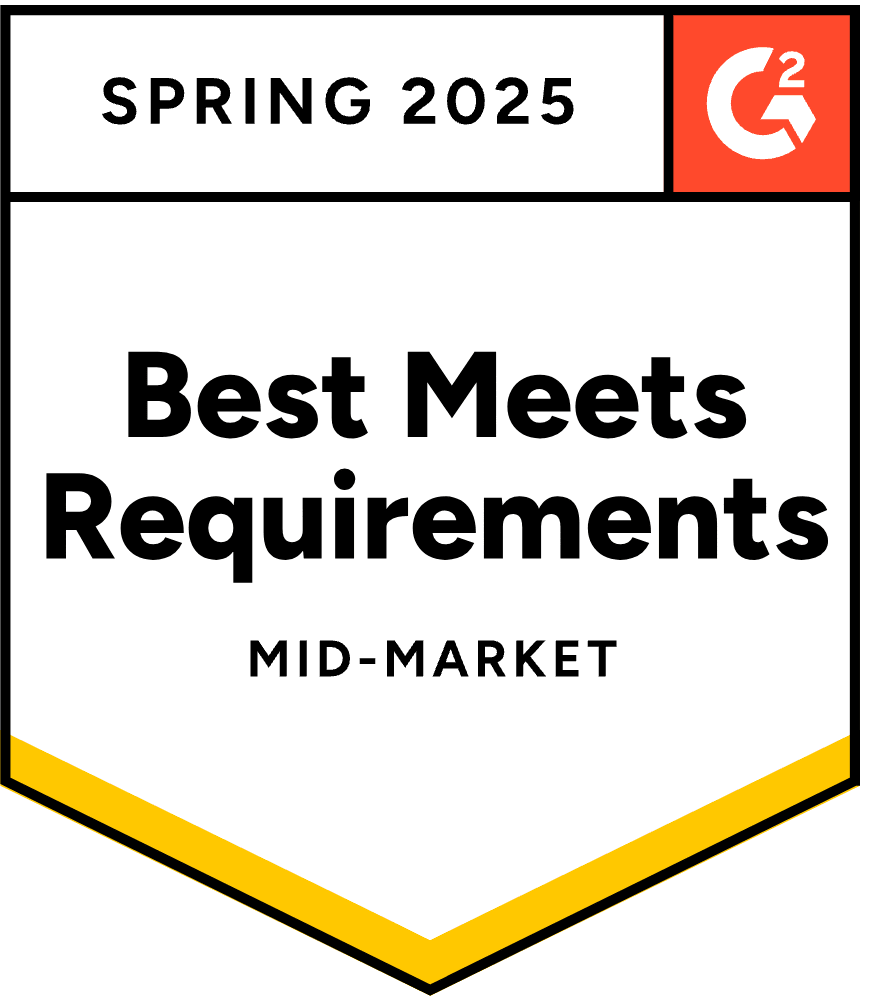- Blog
- 10 Effective Lead Generation Examples You Should Try in 2025
10 Effective Lead Generation Examples You Should Try in 2025
-
Nikolett Lorincz
- Marketing
- 6 min read
Table of Contents
Let’s face it—lead generation can be a bit of a mystery.
You’ve got a great product or service, but generating leads and getting the right people to notice and actually show interest? That’s the real challenge.
If you’ve been struggling to find lead generation strategies that work or just want to refresh your approach, you’re in the right place. In this article, we’ll showcase ten of the best lead generation examples that can help you attract and convert prospects into engaged leads.
Let’s get started!
What is lead generation?
Before we dive into the lead generation examples, let’s clarify what lead generation actually is.
At its core, lead generation is the process of attracting and converting strangers and prospects into people who have indicated interest in your company’s products or services.
This interest is typically demonstrated by actions like filling out lead generation forms, signing up for a newsletter, or downloading a free resource.
Why is lead generation important?
Lead generation is crucial for one simple reason: without leads, your business can’t grow.
Leads are the lifeblood of any company—they’re the potential customers who will ultimately buy your products or services.
Effective lead generation allows you to build a relationship with your audience, understand their needs, and position your offerings as the perfect solution.
In a world where consumers are bombarded with choices, targeted lead generation ensures you’re not just part of the noise but a clear and relevant option.
10 lead generation campaigns to inspire you
Ready to revamp your lead generation strategy? Here are ten lead generation strategy examples that are not only creative but also proven to be effective.
1. Quiz
Quizzes are a fantastic way to engage potential leads while collecting valuable data.
Function of Beauty’s custom hair quiz is a prime example. By asking users specific questions about their hair type, concerns, and goals, they can offer personalized product recommendations tailored to each user’s unique needs.
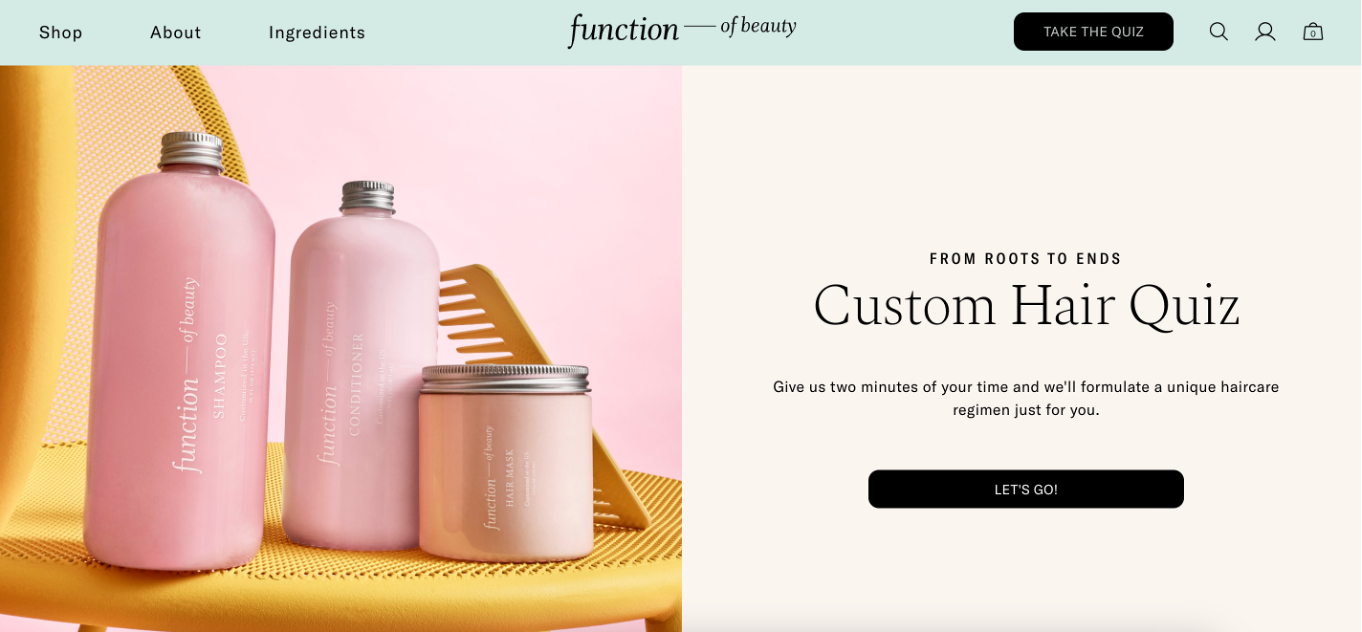
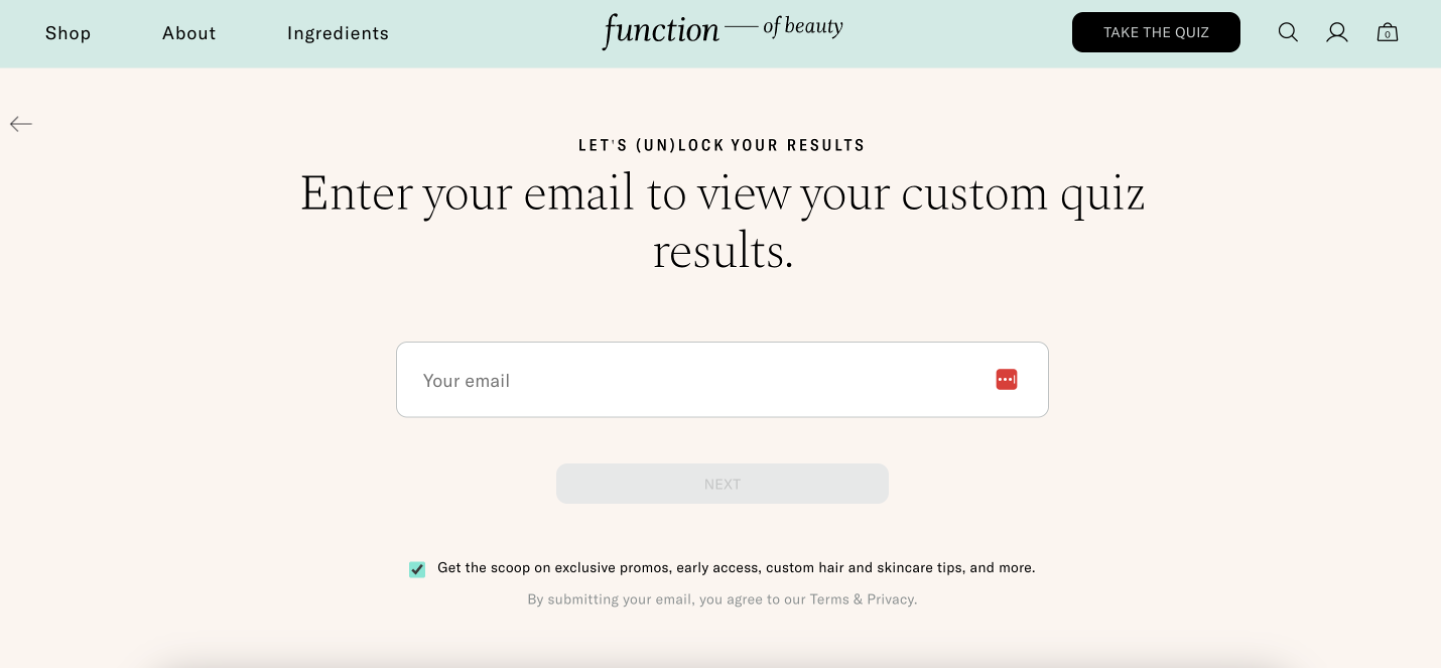
This lead generation strategy creates a highly personalized experience and builds a sense of trust and relevance. Users feel understood and valued, making them more likely to convert.
Quizzes like this are particularly effective because they provide immediate, personalized value in exchange for basic information like an email address. Additionally, they help generate qualified leads by ensuring that the collected information aligns with the users’ specific needs and preferences.
Try these quiz popup templates to get started with this strategy quickly:
2. Percentage discount
Everyone loves a good deal, and a percentage discount is a straightforward way to capture attention.
Beis Travel’s popup, which offers new visitors 15% off their first purchase, is a great example of this lead generation strategy in action.
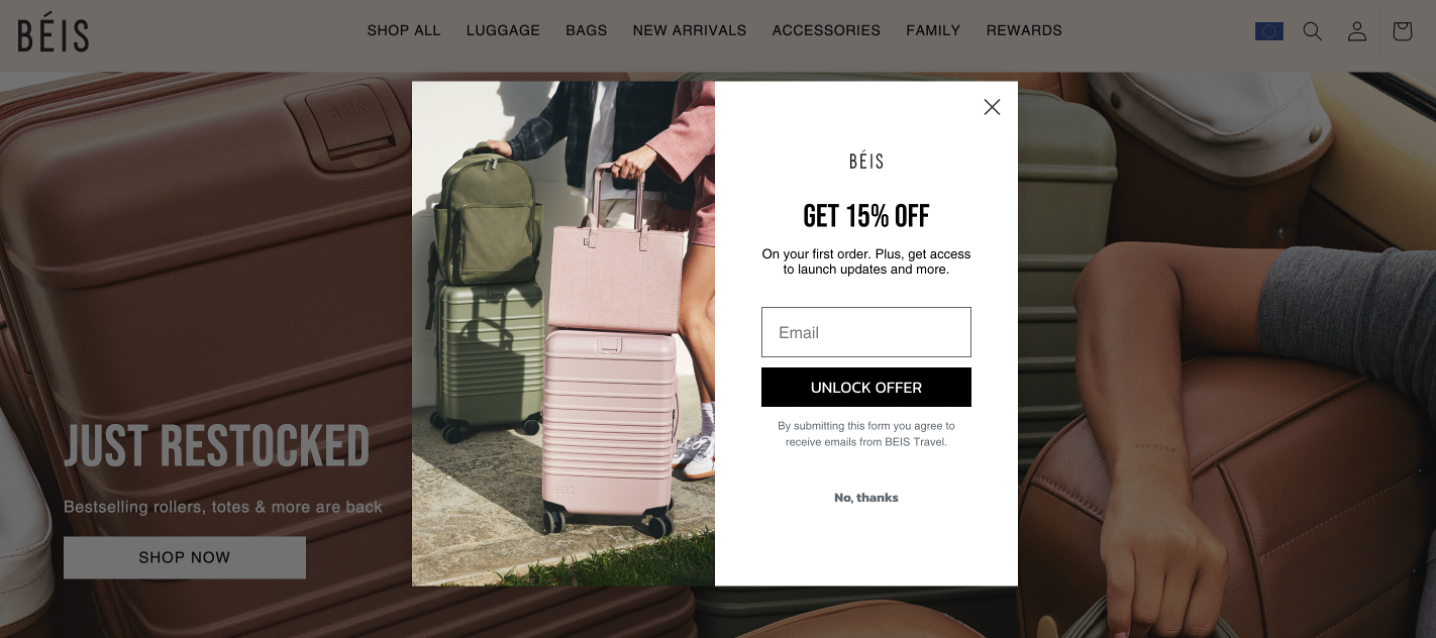
By presenting the discount as a limited-time offer, they create a sense of urgency, prompting website visitors to act quickly. This approach capitalizes on the prospect’s immediate interest and incentivizes them to make a purchase before leaving the site.
It’s a simple yet effective way to convert window shoppers into paying customers.
Here are some discount popup templates you can try if you’d like to generate leads:
3. Mystery discount
If you want to add an element of intrigue to your lead generation strategy, consider offering a mystery discount.
Vegetology’s popup teases visitors with an “exclusive discount” but keeps the exact amount a mystery. This tactic plays on human curiosity, encouraging visitors to provide their email address in exchange for discovering the deal.
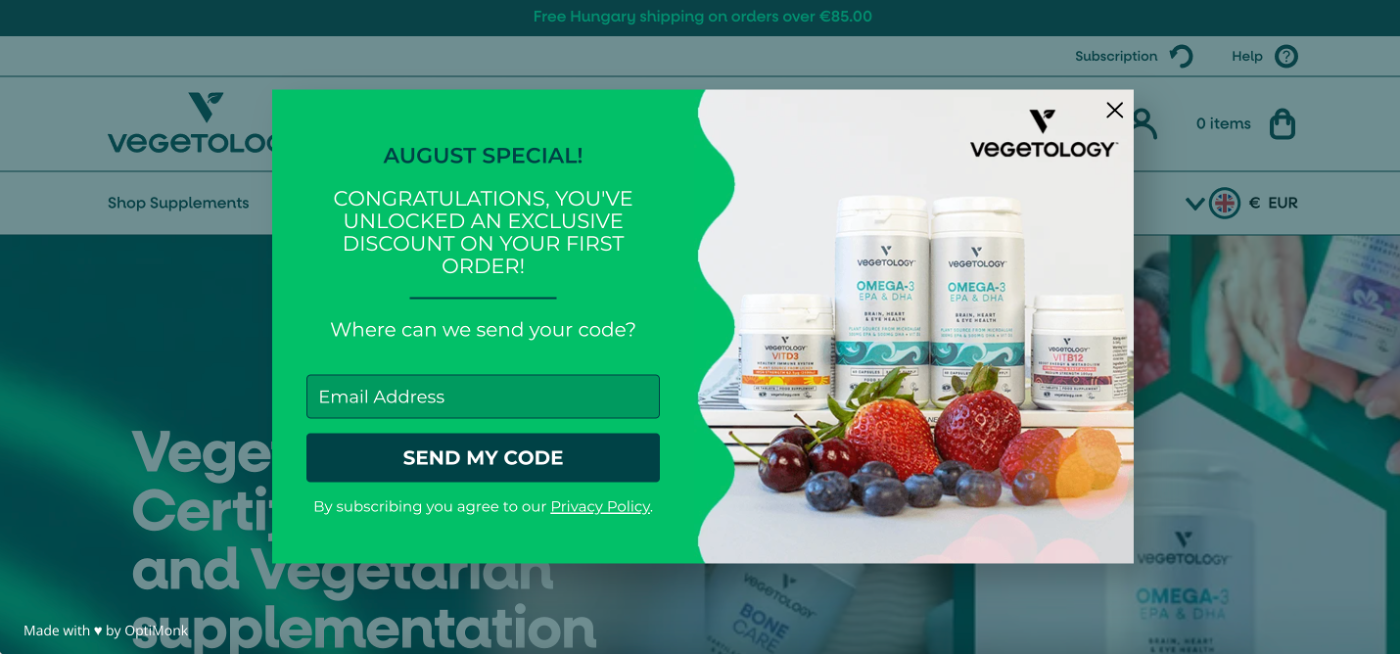
Mystery discounts can serve as an effective lead generation tool by capturing potential customer information and enhancing lead quality.
The mystery element adds a fun and engaging twist, making the lead generation process feel more like a game than a transaction.
4. Giveaway
Giveaways are a powerful way to generate leads quickly.
Magic Spoon leverages this strategy by offering visitors a chance to win free cereal in exchange for their email address. The key to their success is the simplicity and appeal of the prize—it’s a product that people already love or are eager to try.
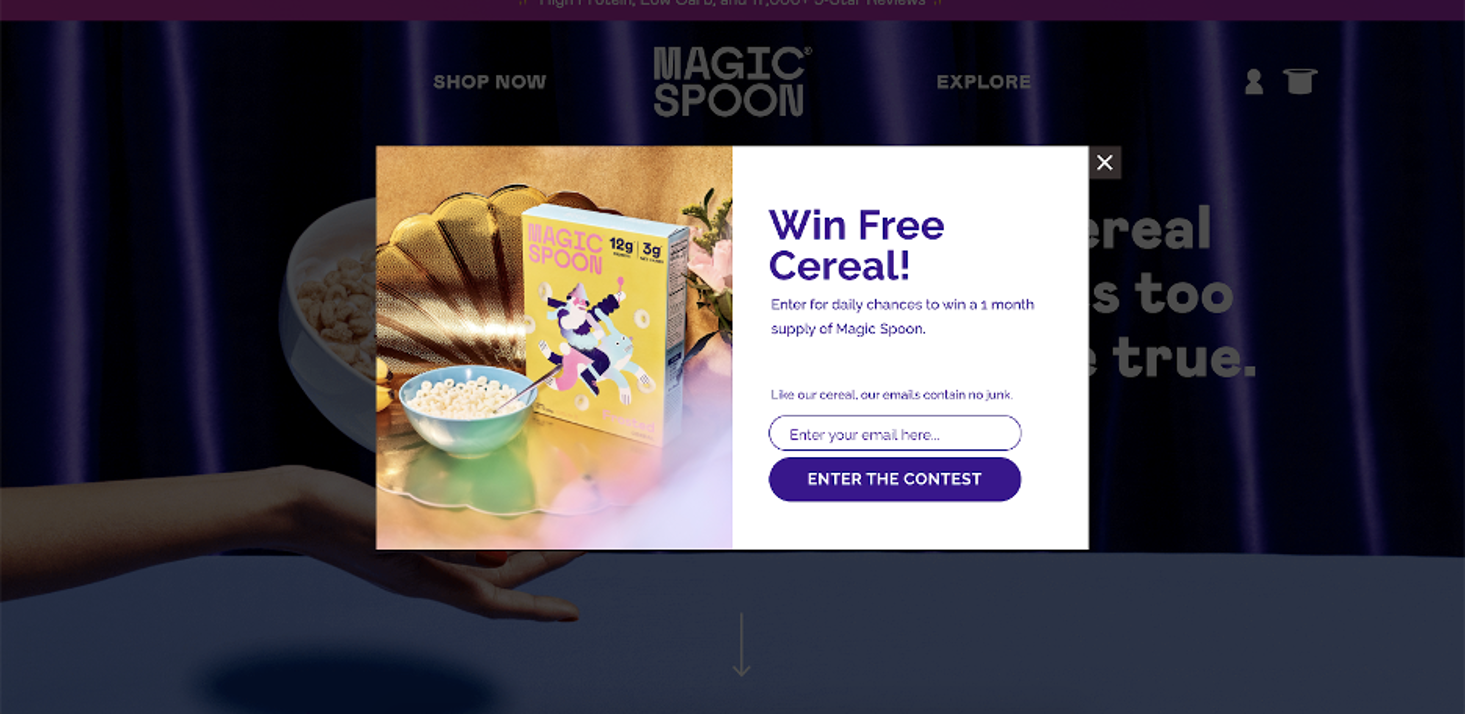
This lead generation example taps into the excitement of winning something for free, making it an easy decision for visitors to enter their information. Giveaways like this can quickly build your email list, giving you a large pool of leads to nurture and convert.
You can get started with these giveaway popup templates:
5. Gamification
Gamification adds a fun, interactive element to lead generation, making the process enjoyable for users.
For example, MotionGrey uses a “lucky wheel” popup where visitors can spin to win a discount or prize.
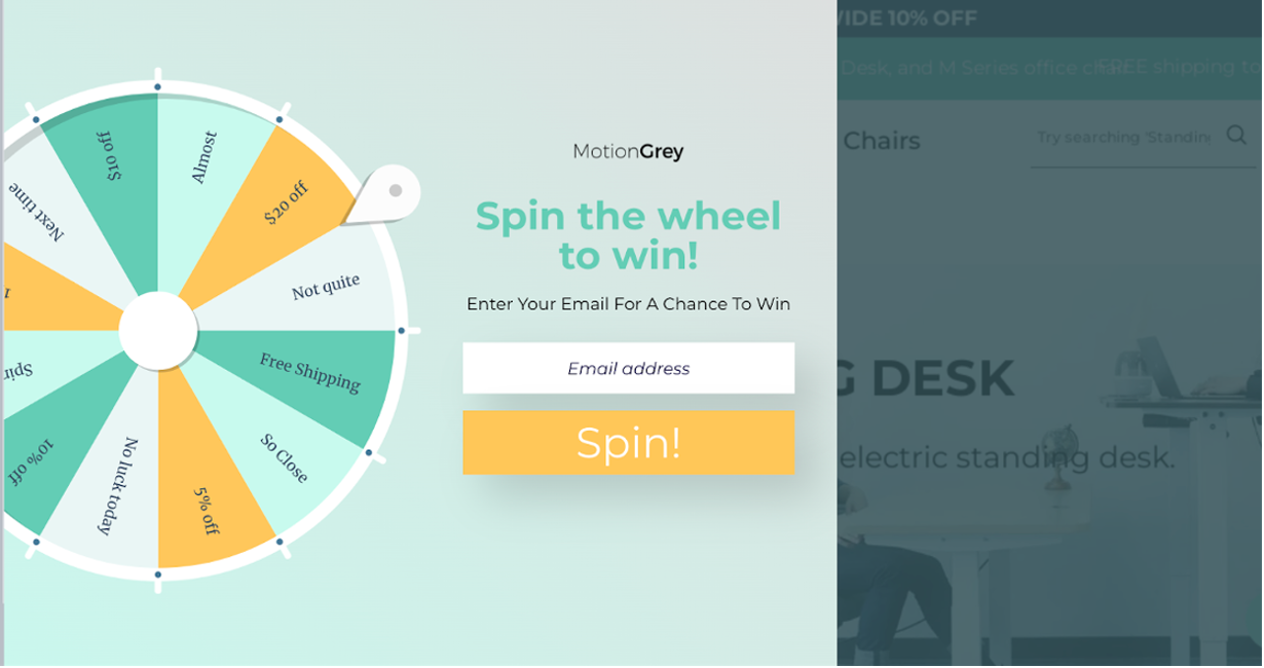
Similarly, London Lash offers a digital scratchcard, allowing users to “scratch off” a virtual card to reveal their discount.
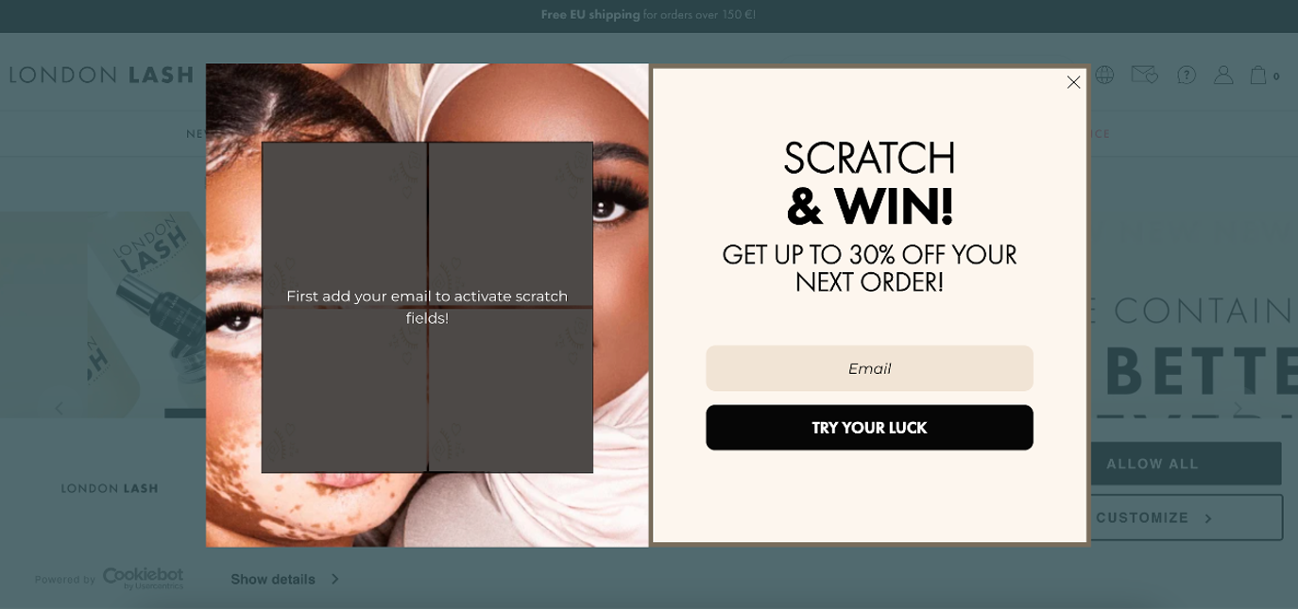
These methods are effective because they engage visitors in a playful way, turning the act of providing contact information into an enjoyable experience.
Gamification can significantly increase conversion rates by making the lead generation process feel like a rewarding game rather than a chore.
6. Content upgrade/ebook
Offering a content upgrade, such as an ebook, is a classic but highly effective lead generation tactic.
For example, The Turmeric Co. offers a free “Turmeric Recipe Book” in exchange for an email. This strategy works well because it provides immediate value to the user, encouraging them to opt-in for more content.
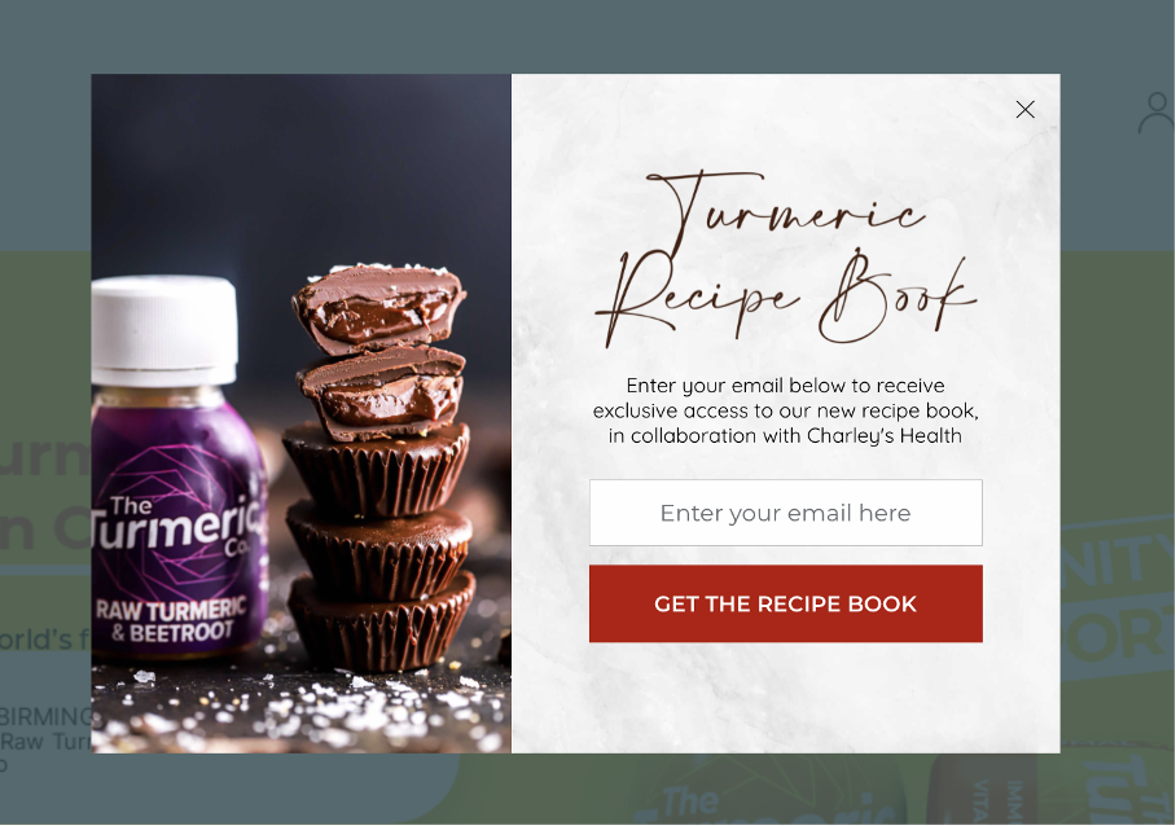
Understanding your target audience is crucial when offering content upgrades, as it ensures the content is relevant and valuable to them.
This method is particularly effective for industries where education and content consumption are key to the buying process.
7. Webinars
Webinars are a goldmine for lead generation, particularly in B2B markets.
Hosting a webinar on a relevant topic not only positions your brand as an authority but also attracts engaged leads who are genuinely interested in your content.
Webinars offer the opportunity to interact with your audience in real-time, answer their questions, and provide in-depth knowledge. This interactive experience helps build a deeper connection with your audience, making them more likely to trust your brand and consider your products or services.
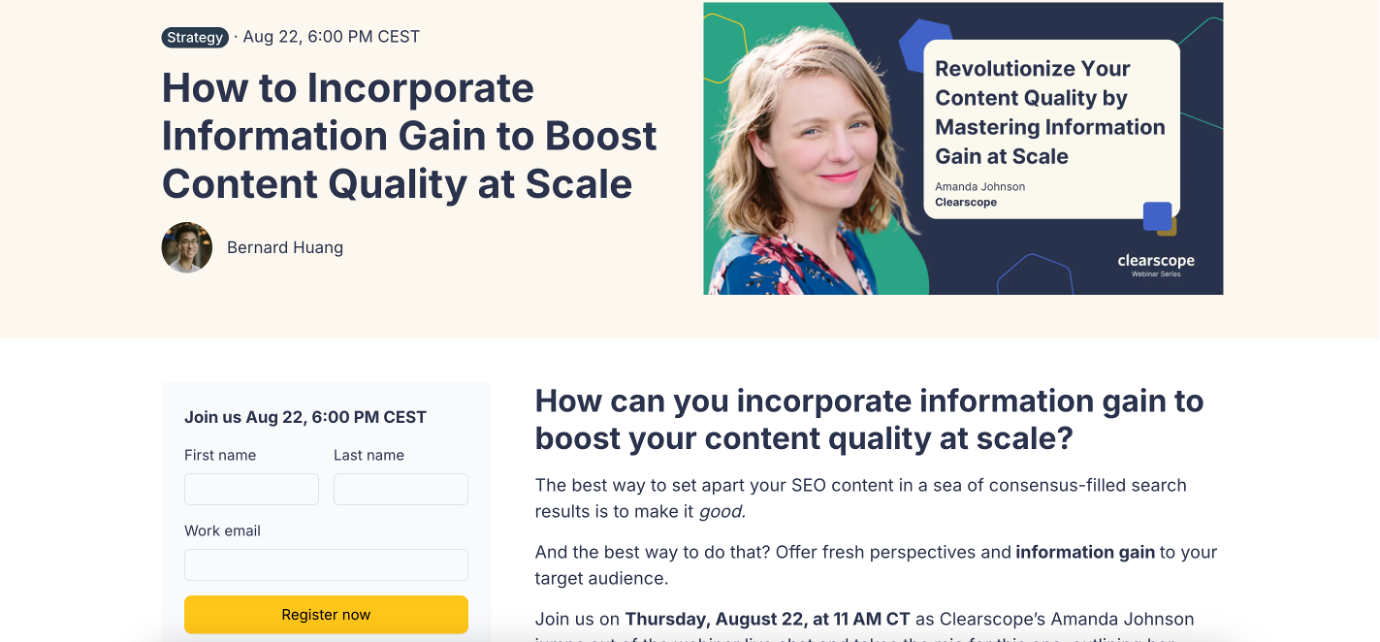
8. Social media lead generation
Social media isn’t just for brand awareness; it’s also a powerful tool for lead generation. By using lead generation ads on platforms like Facebook or Instagram, you can capture leads directly within the platform without requiring them to leave the app.
For example, Facebook’s lead ads allow users to sign up for offers or newsletters without ever leaving their newsfeed. This reduces friction and can significantly increase your conversion rate, as it streamlines the process and keeps users within the platform they’re already engaged with.
Social media platforms also offer sophisticated targeting options, allowing you to reach specific audiences with tailored messages.
9. Referral programs
Referral programs incentivize your existing customers to bring in new leads by offering rewards for successful referrals.
This strategy taps into the power of word-of-mouth marketing, where new leads are more likely to convert because they trust the recommendation from someone they know.

10. Free trials
Offering a free trial is another excellent way to generate leads, especially for SaaS companies.
By allowing potential customers to experience your product firsthand, you lower the barrier to entry and increase the chances of conversion once they see the value your product provides.
For instance, a software company might offer a 14-day free trial with no credit card required. This approach gives users a risk-free opportunity to explore the features and benefits of the product, making them more likely to convert to paying customers once the trial period ends.
FAQ
How do you generate leads?
Generating leads involves a combination of strategies designed to attract potential customers and encourage them to express interest in your products or services. Some common lead generation methods include content marketing, search engine optimization, email marketing, and social media marketing. The key is to offer something valuable to your audience in exchange for their contact information, such as their email address.
What are some lead generation tools?
There are many tools available to help streamline and optimize your lead generation efforts. Here are a few popular ones:
- OptiMonk: A powerful tool for creating popups, sidemessages, and other forms designed to capture leads on your website.
- HubSpot: A comprehensive platform that offers tools for email marketing, landing pages, forms, and CRM, all designed to help capture and nurture leads.
- Mailchimp: While primarily an email marketing tool, Mailchimp also offers landing page creation and automation features that are great for lead generation.
- Unbounce: Specializes in creating high-converting landing pages to capture leads.
- LinkedIn Lead Gen Forms: Perfect for B2B companies, this tool allows you to capture leads directly within LinkedIn through sponsored content and ads.
How do you build a lead generation strategy?
Building an effective lead generation strategy involves several key steps:
- Identify your target audience: Understand who your ideal customers are, what they need, and where they spend their time online.
- Create valuable content: Develop valuable content that addresses the needs and interests of your target audience. This could be in the form of blog posts, ebooks, webinars, or quizzes.
- Choose the right tools: Select the lead generation tools that best suit your goals and audience. This could include landing page builders, email marketing platforms, and CRM systems.
- Optimize your website: Ensure that your website is optimized for lead generation by incorporating forms, popups, and clear calls-to-action that encourage visitors to provide their contact information.
- Promote your offers: Use various channels like social media platforms, email marketing, and paid ads to promote your lead magnets and drive traffic to your website.
- Measure and refine: Track the performance of your lead generation efforts using analytics tools. Pay attention to metrics like conversion rates and cost per lead, and adjust your strategy as needed to improve results.
What are qualified leads?
Qualified leads are prospects who have shown a strong interest in your products or services and meet specific criteria that indicate they are more likely to become customers. There are typically two types of qualified leads:
- Marketing qualified leads (MQLs): These are individuals who have engaged with your marketing efforts, such as downloading an ebook or attending a webinar, and are considered more likely to become customers based on their interactions.
- Sales qualified leads (SQLs): These leads have progressed further down the funnel and have been vetted by the sales team as being ready for direct outreach or a sales pitch. They typically have a clear need for your product and the authority to make purchasing decisions.
Wrapping up
These were just a few examples designed to inspire your lead generation campaign, and while they are effective lead gen campaigns, remember that there are numerous other strategies out there.
Whether you’re looking to engage website visitors with a fun quiz, entice them with a mystery discount, or build trust through a webinar, there’s a tactic here that can generate leads for your business.
Remember, the key to an effective lead generation strategy is to offer value in exchange for information. By doing so, you can build a list of engaged prospects who are genuinely interested in what you have to offer.
Try these lead generation strategies, track your results, and don’t be afraid to experiment until you find what works best for your target audience. After all, lead generation is not a one-size-fits-all approach—it’s about finding the right fit for your business and your customers.
Migration has never been easier
We made switching a no-brainer with our free, white-glove onboarding service so you can get started in the blink of an eye.
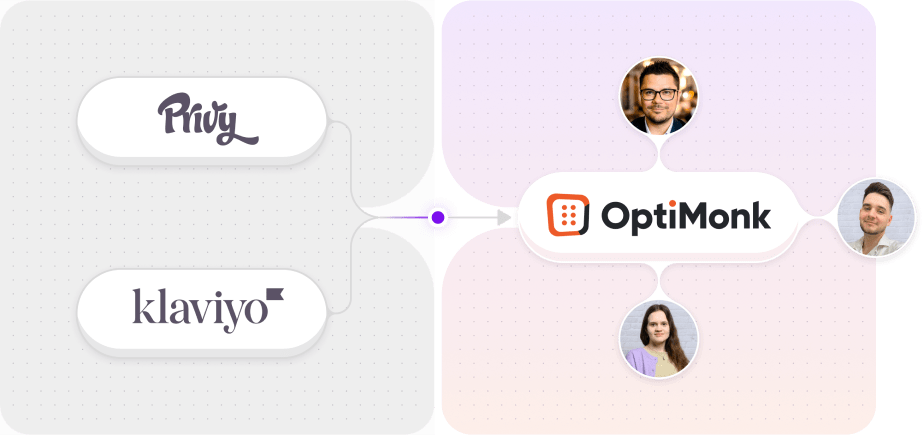
What should you do next?
Thanks for reading till the end. Here are 4 ways we can help you grow your business:
Boost conversions with proven use cases
Explore our Use Case Library, filled with actionable personalization examples and step-by-step guides to unlock your website's full potential. Check out Use Case Library
Create a free OptiMonk account
Create a free OptiMonk account and easily get started with popups and conversion rate optimization. Get OptiMonk free
Get advice from a CRO expert
Schedule a personalized discovery call with one of our experts to explore how OptiMonk can help you grow your business. Book a demo
Join our weekly newsletter
Real CRO insights & marketing tips. No fluff. Straight to your inbox. Subscribe now
Nikolett Lorincz
- Posted in
- Marketing
Partner with us
- © OptiMonk. All rights reserved!
- Terms of Use
- Privacy Policy
- Cookie Policy
Product updates: January Release 2025
